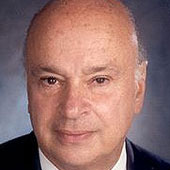Latin America’s Road to Integration
How has increased diversification benefited Latin America’s economies?
September 8, 2004
The dream of one single economic trade zone extending from the northern-most reaches of Canada to the southern tip of Chile and to the eastern Caribbean is not new.
Commerce was the major topic when Simón Bolívar summoned the first inter-American congress in 1826.
The Pan American Union established at the Washington Conference convened by U.S. President Grover Cleveland in 1888 had free trade as its principal goal.
Meetings were held, pronouncements made, and agreements signed — but very little happened. There were several reasons, mostly historic or geographic.
First, the economies of Latin America and the Caribbean were competitive, not complementary. Until recently, the only products that the countries of the Americas successfully exported to one another were the tango and the samba.
Industry was rudimentary. Indeed, before air conditioning was introduced into the region in the 1960s, it was impossible to consider building manufacturing plants there.
Until the 1970s, the countries produced the same things. Whether it was copper, coffee, or cacao, they had few goods that the others wanted to buy.
Cross-border transportation networks were virtually nonexistent. Few roads led to frontiers — and those that did were incapable of carrying heavy traffic.
Customs houses were corrupt and the amount of paperwork required was sufficient to discourage everyone but the most determined. Except for traffic in drugs or clandestine arms, no competitive business could benefit.
Second, government controls and bureaucracy were so pervasive that no country could afford to trade with the others.
I recall the Venezuelan businessman confessing his frustration when he wanted to set up a branch of his business in Ecuador under the recently signed Andean Pact.
Ironically, the regulations the pact enacted to keep out foreign companies and encourage local production were so complex, he said, that only large multinational companies could afford to pay the lawyers necessary to manage the paperwork.
Small Venezuelan and Ecuadorean companies would go bankrupt waiting for the bureaucracies — or paying the bribes — to get the papers moving.
Third, land transportation was so bad that a producer could ship only by sea. Impenetrable rain forests and the high Andes made it cheaper for Latin American exporters to ship their products to the United States or Western Europe than to one another.
Furthermore, for the few quality products that were competitive, it was far better to send them to the rich industrialized countries than to small, poor countries.
After World War II, false starts toward economic integration were numerous. Felipe Herrera, the first president of the Inter-American Development Bank in the 1960s, pressed the issue strongly.
But the limits of intra-regional trade would not go away without meaningful efforts to ensure intra-regional transportation.
Moreover, when trade liberalization affected industries that were not competitive, the governments generally succumbed to pressure. Most of the owners of the protected interests were part of the ruling oligarchies — and all fought to maintain their protection.
Despite these obstacles, however, intra-regional integration made noteworthy progress in the early 1960s, encouraged by the motivation and policies of the Alliance for Progress.
The Central American Common Market was formed and raised intra-regional trade from 8.5% of total trade in 1961 to 23.5% in the mid-1970s — before it collapsed in the debt debacle and civil wars in the 1980s.
In the early 1960s, intra-regional trade among South American nations averaged about 6% of their global trade. Today, it approaches an average 17%.
Some countries — such as Bolivia, Paraguay and Uruguay — depend almost entirely on intra-regional trade, which makes up more than 50% of their exports.
As a result of the economic openings of the early 1990s, intraregional exports within the Americas quadrupled from $4.1 billion to $16.1 billion between 1990 and 1996 — growing from 8.9% of total exports to 21.5%.
Although the path to implementation is still arduous, leaders are conscious of the need to replace national policies with regional policies.
Growing industrialization gives the Latin American nations an increasing number of products to ship to one another.
The Andean Group's exports among themselves amount to 11% of their total trade. The Central American Common Market — undergoing major revisions — now accounts for 21% of the member countries' trade.
The recent accord of the Central American countries to create an integrated electric grid linking all the countries and the proposal by President Vicente Fox of Mexico to build the Central American infrastructure as part of its "Plan Puebla-Panama" are constructive steps in this direction.
The development over the last several decades has enabled Latin American countries to diversify their economies enormously.
The manufacturing component of intra-regional exports has grown from 18% in 1980 to more than 40%. Brazil, Mexico and Colombia's exports today are nearly 70% manufactured goods.
Costa Rica has succeeded in attracting major high-tech investments, with Intel building a chip-making plant there. As a result, Costa Rica has doubled its exports based on technology products alone.
The percentage of manufactured goods Latin America exports to the United States is even more impressive, having grown from 23% to 58% between 1980 and 2003. Only Cuba has been left behind, with a primitive economy dependent on commodities.
The promise of free trade with the United States will greatly accelerate this trend. As each Latin American country produces more goods for the U.S. market, it will automatically have more goods to sell to others.
Economies that were once competitive — all producing the same primary products — are now becoming complementary.
While there is a considerable way to go, the trend is clear. Within a very short time, the Latin American nations will be more prepared than ever to trade with one another.
Read previous
The Global War on Drugs — An Update
September 7, 2004
